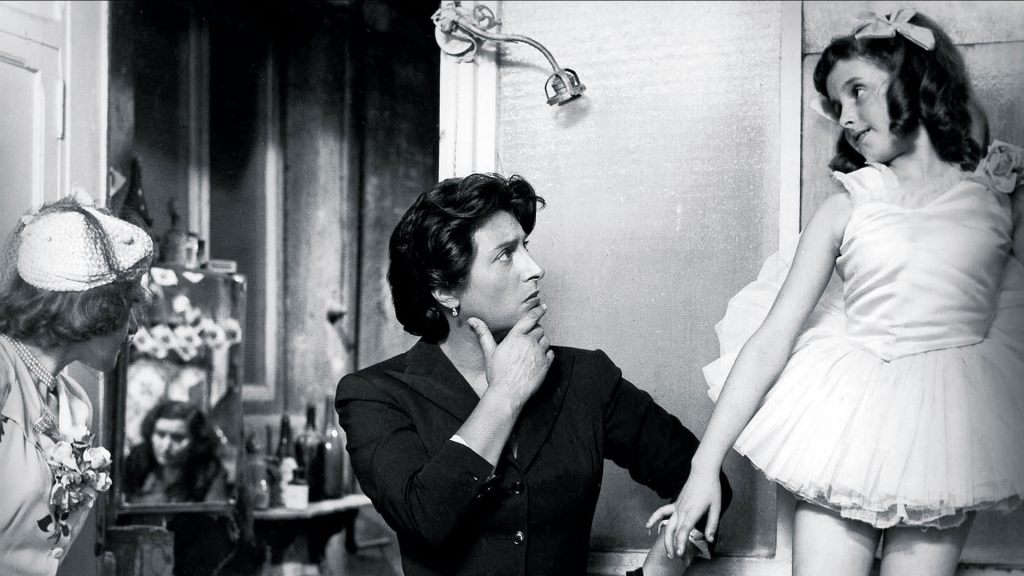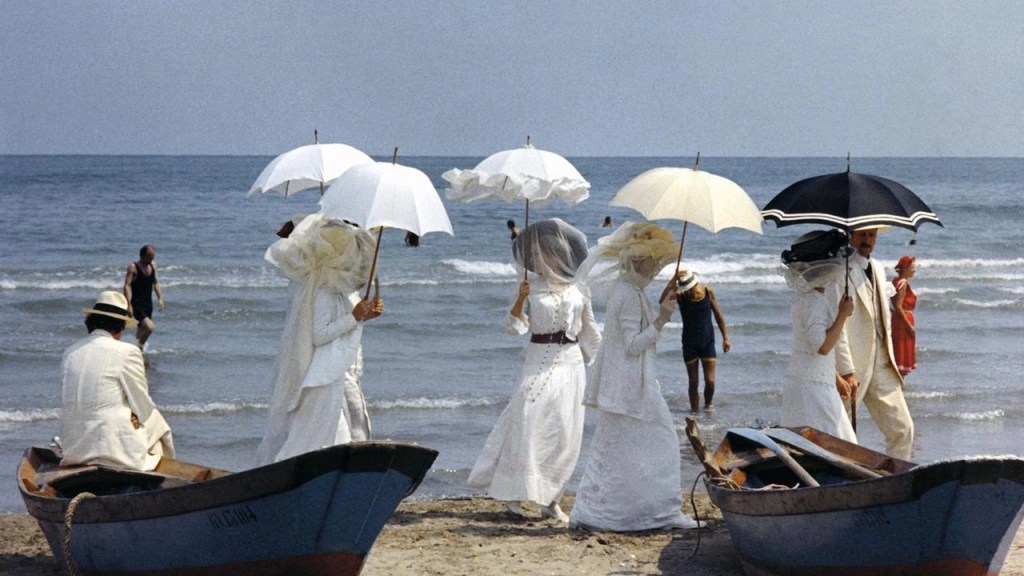Luchino Visconti, an Italian director and one of the forefathers of Italian neorealism, is celebrated for his stylistic versatility and his profound social commentary. His oeuvre spans the stark realism of his early films like Ossessione to the aesthetic opulence of later works such as The Leopard. Known for his historical settings, operatic style, and skilful adaptations of literary works, Visconti masterfully combined socio-political themes with lush visual storytelling.
Born into Italian nobility, Visconti developed an early interest in the arts, particularly theatre and opera. His passion for social and political issues found an outlet in film, a medium he turned to after his experiences with theatre and opera and an encounter with French filmmaker Jean Renoir. His debut film, Ossessione, marked the advent of Italian neorealism and announced Visconti as a significant new voice in cinema.
Visconti’s early career was defined by the principles of neorealism, as exemplified by La Terra Trema. His films from this period employed non-professional actors, on-location shooting, and narratives centred around working-class struggles, offering a critique of societal structures and class disparity. However, as his career progressed, he transitioned from neorealism to a more stylised aestheticism characterised by a detailed production design and extravagant costumes, providing a lush visual backdrop for his continued exploration of societal decay.
From Neorealism to Luscious Melodrama
His films often engaged with historical settings, with almost obsessive attention to detail in their production designs. Whether it’s the Sicily of the 1860s in The Leopard or late 19th-century Venice in Death in Venice, the grandeur and decay of these settings often mirror the moral states of his characters or the society they inhabit. Moreover, many of Visconti’s films were adaptations of literary works, underscoring his ability to translate complex narratives and themes from the page to the screen.
Visconti’s affinity for opera and theatre is evident in the operatic style of his films. Dramatic performances, sweeping narratives, and extravagant sets are all trademarks of this approach, as seen in films such as Senso and Ludwig. He also maintained a close working relationship with his actors, frequently collaborating with performers like Alain Delon and Dirk Bogarde across multiple films, enhancing the emotive intensity and continuity in his body of work.
Visconti’s influence on cinema is profound and far-reaching. His transition from neorealism to aestheticism and his explorations of social and political themes have significantly impacted filmmakers in Italy and around the world. His mastery of visual storytelling and keen understanding of societal structures and human character continues to inspire directors such as Martin Scorsese and Bernardo Bertolucci. Thus, Visconti’s legacy is not only etched in the annals of Italian cinema but is also deeply embedded in the broader fabric of world cinema.

Luchino Visconti (1906 – 1976)
Calculated Films:
- Ossessione (1943)
- La Terra Trema (1948)
- Bellissima (1951)
- Senso (1954)
- Le Notti Bianche (1957)
- Rocco and Her Brothers (1960)
- The Leopard (1963)
- The Damned (1969)
- Death in Venice (1971)
- Ludwig (1973)
Similar Filmmakers



Luchino Visconti’s Top 10 Films Ranked
1. Rocco and His Brothers (1960)
Genre: Drama, Melodrama

2. The Leopard (1963)
Genre: Period Drama, Political Drama

3. La Terra Trema (1948)
Genre: Drama

4. Ludwig (1973)
Genre: Biographical, Period Drama, Psychological Drama

5. Le Notti Bianche (1957)
Genre: Romance, Melodrama

6. Bellissima (1951)
Genre: Drama

7. Death in Venice (1971)
Genre: Psychological Drama, Period Drama

8. Senso (1954)
Genre: Period Drama, Romance, Melodrama

9. The Damned (1969)
Genre: Period Drama, Political Drama

10. Ossessione (1943)
Genre: Crime, Melodrama

Luchino Visconti: Themes and Style
Themes:
- Social Conflict and Class Struggle: Visconti often explored the tensions between classes, such as in The Leopard, where he depicts the decline of the Sicilian aristocracy amid the rise of a new social order.
- Decay and Degeneration: His works frequently feature the decline of physical and moral aspects, as seen in Death in Venice, where the protagonist is obsessed with beauty and youth amid the decay of his own health.
- Sexuality and Repression: Visconti was not afraid to delve into the complexities of human sexuality, often examining the consequences of repression and societal norms, exemplified in Ludwig and Death in Venice.
- Historical Context and Politics: Many of Visconti’s films, including Senso and The Leopard, are set against significant historical backdrops, influencing characters’ lives and underscoring the impact of political events on personal destinies.
- Family Dynamics and Personal Relationships: The intricate and often fraught relationships within families play a central role in films like Rocco and His Brothers, where external pressures and internal conflicts test familial bonds.
Styles:
- Operatic and Theatrical Aesthetics: Visconti’s background in opera is evident in his grandiose set designs, dramatic lighting, and emphasis on theatricality, as vividly portrayed in Senso.
- Neorealism Turned to Personal Drama: Initially influenced by Italian Neorealism, Visconti combined its aesthetic with personal and psychological depth, creating a unique blend that is especially noticeable in La Terra Trema.
- Long Takes and Elaborate Tracking Shots: His use of long takes and complex camera movements creates an immersive experience, allowing the audience to fully engage with the scene, a technique he refined in The Leopard.
- Attention to Period Detail: Visconti’s meticulous attention to historical accuracy and detail is renowned, bringing authenticity to the settings and costumes of his period dramas, as in the sumptuously crafted Ludwig.
- Use of Symbolism and Metaphor: Symbolic elements often underpin the narrative in his films, with objects, settings, and even colours serving as metaphors for larger themes, such as the decaying villa in Death in Venice representing the disintegration of the protagonist’s ideals.
Directorial Signature:
- Ensemble Casts and Intense Character Studies: Visconti frequently worked with ensemble casts, drawing out intense and nuanced performances, which became a hallmark of his character-driven storytelling.
- Contrast between Opulence and Squalor: Visconti had a unique ability to juxtapose the decadence of the upper class with the grittiness of the lower class, as shown in the visual contrasts of Rocco and His Brothers.
- Collaboration with Renowned Composers: His films often feature scores by famous composers like Giuseppe Verdi and Gustav Mahler, whose music intensifies the emotional landscape of his films.
- Melodramatic Flair: Despite his realistic beginnings, Visconti’s style evolved to include a more melodramatic flair, with heightened emotions and dramatic plot twists, which he balanced with his signature realism.
- Recurring Themes of Existential Crisis: Visconti’s protagonists are often depicted in the midst of existential crises, grappling with their place in the world, a theme he explored with depth and sensitivity throughout his career.
Luchino Visconti: The 40th Greatest Director




